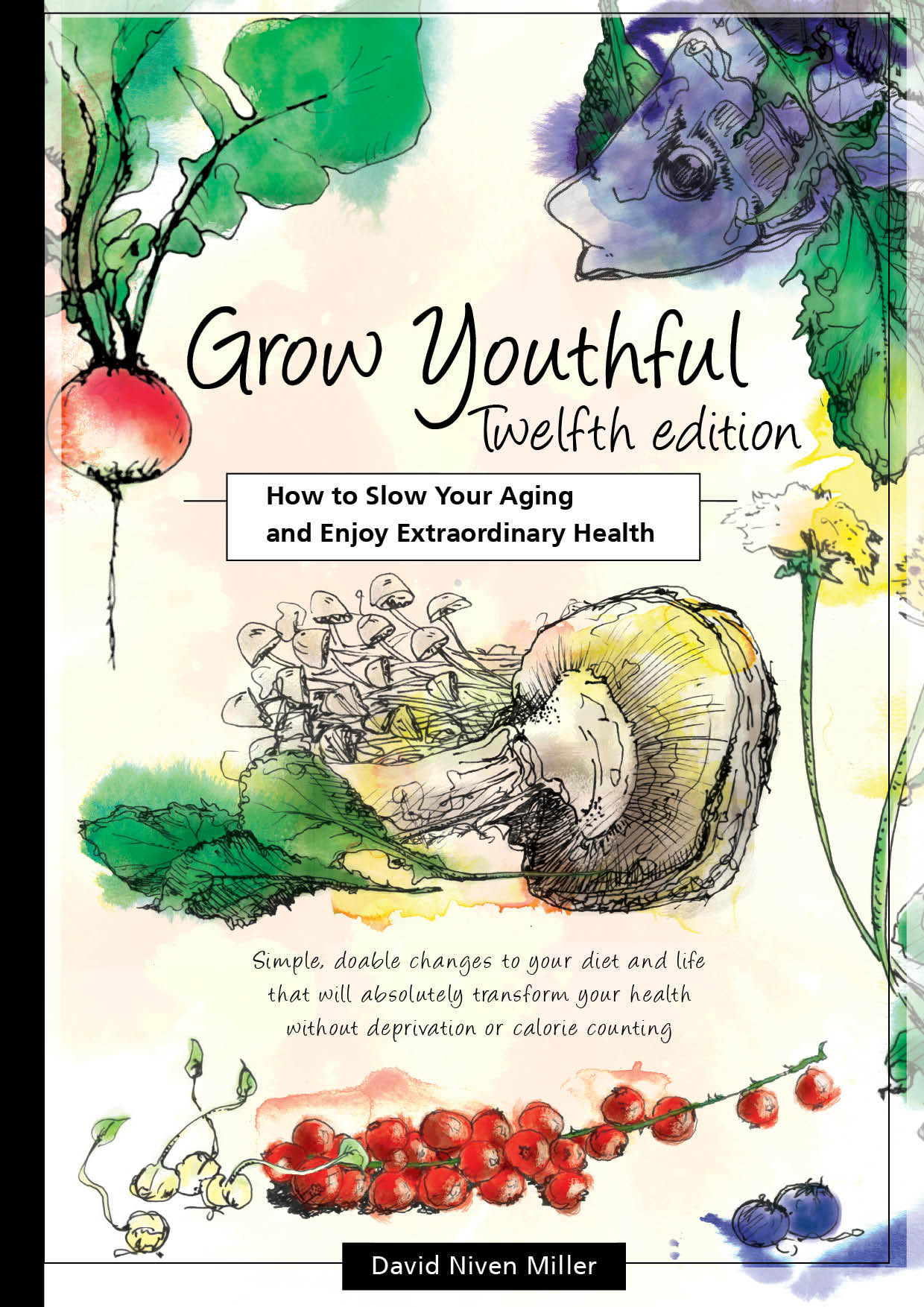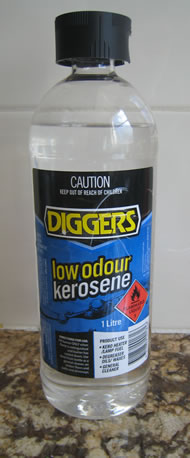
Kerosene (paraffin)
Kerosene uses
Kerosene medicinal properties
Kerosene as a traditional remedy
Which kerosene to use?
How to use kerosene
Toxicity, precautions, contraindications, warnings
References
Kerosene uses
Kerosene (kerosine) is also known as paraffin. It is a thin, clear liquid, insoluble in water. By far its biggest commercial use is as jet fuel. It has a low flame temperature, so it is safer than most other hydrocarbon fuels when used for cooking or lighting. It is used by fire breathing or fire juggling entertainers because its low flame temperature poses a lower risk if the performer is exposed to the flame.
Kerosene has been used medicinally since ancient times. People in ninth century Persia distilled crude petroleum fossil oil into hydrocarbon fractions, taking off kerosene, bitumen (tar) and other fractions. They used these products for heating, lighting, building and medicines. Kerosene is still widely used as a traditional and folk remedy in many parts of the world today. It is most used in poorer countries and non-Western countries where there is less corruption (misinformation) by pharmaceutical companies, including Russia, Eastern Europe and Africa. A 2009 study in Nigeria found that about 70 per cent of the population used petroleum products medicinally. (1)
Fungi and parasites are some of the greatest enemies of trees, and most trees have evolved compounds that kill or repel them. For thousands of years, people have managed to extract some of these compounds and use them as natural remedies. They include eucalyptus oil, oregano oil, neem oil, tea tree oil, pau d'arco extract, olive leaf extract, gum turpentine and a variety of essential oils. Most of these oils are composed of hydrocarbons with a similar chemical structure to kerosene.

The widespread use of antibiotics after World War II encouraged the rise and spread of fungi and mycoplasma that are at the root of most of our modern diseases like allergies, asthma, cancers and various autoimmune diseases. Kerosene's effectiveness against fungi means that it is a valuable treatment, well-proved over many centuries as a traditional or folk remedy.
Kerosene has powerful antimicrobial properties and can prevent an autoimmune attack. However, it does not repair the damage caused by an ailment. A healthy lifestyle and good food are essential for full recovery and to prevent recurrence.
Kerosene and pure gum turpentine have many similar health and medicinal properties, but they are not the same product. Here in Australia they are both easily available and affordable. Given the choice, I prefer to use gum turpentine rather than kerosene because I like its taste, smell and feel. If cost or availability is a concern, each product is a partial substitute for the other, provided you adjust the dosage and you carefully read how to use them.
Kerosene medicinal properties
- Powerful antifungal.
- Treatment for parasites throughout the body. Eliminates parasites including worms in the blood and bowel.
- Kills bacteria, especially mycoplasma (bacteria without cell walls). Eliminates pathogenic microbes from the blood and bowel. Especially useful for eliminating CWD (cell wall deficient) microbes while not harming normal gut bacteria.
- Anti-viral.
Kerosene as a traditional remedy
- Arthritis. Dilute one part of kerosene with one or two parts of olive oil. Massage on the skin or use in a warm pack placed on painful areas.
- Autoimmune diseases.
- Bites, stings, poisonous ivy. Wet the area with kerosene or spray liberally. (2)
- Bladder infections including cystitis.
- Blood poisoning (sepsis, septicaemia).
- Cancers. One teaspoon of kerosene a day on an empty stomach. May need to increase up to a maximum of one tablespoon. See How to use Kerosene below. Tumours may be covered with a kerosene pack on the skin.
- Candida. Kerosene rapidly kills candida in the intestines, in the blood, and in other organs. Because it is so effective, beware of the Herx reaction (see below).
- Diabetes.
- Fungi. Nail fungus and fungal infections of the skin such as athlete's foot and jock itch. The affected parts may be soaked in concentrated or diluted kerosene. Thrush in the mouth or vagina may be treated by coating or rinsing with diluted kerosene.
- Infections with bacteria, fungi, viruses, parasites.
- Joint and muscle pain. Rub a little kerosene on the skin with a sponge/cloth, or use a kerosene pack on the skin.
- Lung diseases including bronchitis, pneumonia, tuberculosis.
- Neuralgia. Spray on the painful area. Repeat hourly. (2)
- Paralysis.
- Parasites. Take the dose before a meal, so that it may pass through the stomach and into the intestines.
- Preventative. Take a few teaspoons a year to protect against infections by microorganisms, particularly fungi.
- Prostate. BPH (swollen prostate). Half teaspoon in morning, half teaspoon in evening. Rapid cure within weeks. (2)
- Sinus blockage, severe head cold.
- Throat infections. Dilute one part of kerosene with one or two parts of olive oil. Place in a warm pack over the throat. Sore throat: use one spray every three hours. (2)
- Wounds. Shake with clean/sterile water in a spray bottle and spray with a little kerosene, or moisten wound coverings with a little kerosene. It is a good antibiotic and speeds wound healing. (2) However, if too much is used it can burn (see below).
Which kerosene to use?
According to Walter Last (3), the most suitable kerosene has a boiling point of 100C to 200C. It should be pure.
Australia: Diggers Low Odour Kerosene, sold in hardware stores.
USA: Klean-Strip 1 Kerosene from Walmart and hardware stores.
Germany: SBP (Siedegrenzbenzin) 100/140.
Around the world:
Shell Chemicals Shell-Sol D40 with a boiling range of 145C to 210C.
Shell Special Boiling Point Solvent SBP 100/140 with a lower boiling range may be more suitable for cancer treatment.
BP White Spirit is low in aromatics and boils from 142C to 200C.
Total Spirdane D40, free of aromatics and with a boiling range from 156C to 198C.
Solane 100-155 and Solane 100-140 have lower boiling ranges.
How to use kerosene
How much kerosene you take and for how long is flexible. Some people take it as needed for a specific ailment, while others have a precautionary maintenance dose every year.
Orally
Adults should start cautiously with a few drops or half a teaspoon per day for the first couple of days. Continue with one teaspoon per day for several weeks, but cut back if this causes diarrhoea or other symptoms. If not much seems to happen then gradually increase up to one tablespoon for a week or longer, and then decrease the dose until ending with one teaspoonful, for a total duration of about six weeks. You may need to do a shorter or longer follow-up course two months later, depending upon how your ailment has resolved.
The best time to take kerosene is before breakfast or at bedtime. Take it on an empty or nearly empty stomach because it floats on anything that is in the stomach and will not move down into the colon where you need it. If kerosene is sitting on food in the top of the stomach it may cause burping / repeating for a long time.
A traditional way to take kerosene is with molasses. Lick some molasses to coat the tongue, then take the dose of kerosene on a spoon and wash it down with a small amount of drink and food.
Children may be dosed with kerosene by placing a couple of drops on sugar.
In the lungs
Place two teaspoons of kerosene in a bowl of steaming hot water, hold the head over the bowl and cover with a towel. Take deep breaths through the nose for 10 minutes. Repeat morning and evening. (2) Kerosene dissolves phlegm and gives quick relief. (2)
Adults only. For direct access to the lungs, buy an atomiser mist spray with a small tube. A single spray should deliver about 10 drops. Start by spraying away from the face in front of you, and then move forward to inhale the mist hanging in the air. Do not get it in your eyes. If this is working successfully for you and you feel you need a more substantial dose, gradually try a small single spray while inhaling through the mouth. Eventually you may be able to take a full single spray through the small tube to the back of the throat while inhaling. (2)
On the skin
If used on the skin, undiluted kerosene may burn after 10 to 60 minutes depending on the sensitivity of the skin and the kerosene's boiling range and purity. The skin goes red and will eventually blister. This is why it is important to dilute one part kerosene with two or three parts of another oil such as olive oil or coconut oil. Start cautiously, and monitor the skin to ensure it is not burning.
Toxicity, precautions, contraindications, warnings
Kerosene is NOT the same thing as mineral turpentine. Mineral turpentine, also known as white spirit or mineral spirits, is a petroleum-derived clear liquid commonly used as a brush cleaner and paint thinner for enamel, oil based or solvent-based paints. Do not use mineral turpentine.
Do not use kerosene while taking any pharmaceutical drugs.
If more than several mouthfuls are swallowed, abdominal discomfort, nausea, and diarrhoea may occur. (4)
Herxheimer reaction. If you have serious systemic candida or other pathogenic infections in your body, when you start taking kerosene internally a Herxheimer reaction can occur. The die-off of yeasts such as candida; the debris from other fungi, bacteria, biofilms or tumours; and toxins being released into the bloodstream can make you feel quite ill for a short period. Symptoms can include fatigue, headaches, nausea, joint and muscle pain, general body aches and malaise, sore throat, sweating and chills. If any of these symptoms occur, reduce the dose of kerosene you are taking and help your body clear the toxins that are causing the Herxheimer reaction by drinking plenty of water, avoiding constipation and having at least one bowel movement per day.
Diarrhoea often occurs when taking kerosene internally. This may be a reason to use pure gum turpentine rather than kerosene.
Pregnant women and those who are breastfeeding should not use kerosene because little is known about its possible effects on the fetus or infant.
The LD50 for rats depends on the brand of kerosene. I have seen ratings between 2,000 and 5,760 mg/kg. (4) To put it in perspective, table salt is in this range with an LD50 of 3,750 mg/kg according to the Merck Index.
The greatest danger of taking kerosene internally is if there is a risk of vomiting (not necessarily from the kerosene, but from other causes). If vomit gets into the lungs after a large amount of kerosene has been swallowed this can cause death.
Your comments about any of your experiences - positive or negative - with your use of kerosene are welcome at Grow Youthful. I am always curious about your use of and experience with natural remedies, and your feedback is very welcome.
References
1. G Arikpo, M Eja, E Enene, S Okon, K Enyi-Idoh, S Etim.
Petroleum Distillates Used in Folk Medicine in South Eastern Nigeria.
The Internet Journal of Health. 2009 Volume 11 Number 1.
2. C O Frye.
Consumption of the lungs and kindred diseases treated and cured by kerosene. Its value as a remedy, when to use it, how to use it.
Democrat Printing Co, Tulsa, Oklahoma. 1914.
3. Walter Last.
Kerosene - a Universal Healer.
health-science-spirit.com
4. Diggers Low Odour Kerosene Material Safety Data Sheet.
Retrieved online 16 March 2017. LD50 Oral (rat) > 2000 mg/kg.
